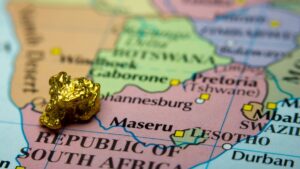Tim Treadgold: Orion poised to reveal all, or relive another Groundhog Day

Pic: Tyler Stableford / Stone via Getty Images
It’s not quite Groundhog Day for shareholders in Orion Minerals (ASX:ORN), but as the mining world’s A-list gathers in Cape Town next month for the annual Mining Indaba conference, investors will be hoping for meaningful news about Orion’s flagship, the Prieska copper project.
A quick answer to the fresh-news question is “possibly”, but that’s largely after interpreting clues such as a series of site tours being organised for bankers and media attending Indaba, the self-proclaimed biggest mining-investment event in the world.
But this is when the allusion to Groundhog Day becomes appropriate, albeit confusing for readers unfamiliar with the deja-vu comic film classic about a man who relives every day of his life as if nothing changes.
In the case of Orion, the same clues this year are the same as last year when it flew several plane-loads of site tourists to Prieska in the Northern Cape Province followed by multiple talks about the project.
Stockhead made last year’s pilgrimage to Prieska and is likely to be represented again this year, after which it will be interesting to compare notes to see how far the project has progressed and whether a development commitment is getting close.
In theory, Prieska is a compelling re-development of what was once one of the world’s base metal giants, churning out 430,000 tonnes of copper and 1.1 million tonnes of zinc over a 20-year period up to 1991.
But that year it was prematurely closed thanks to equipment and capital shortages caused by South Africa’s isolation during the apartheid years.
Pulling out early from Prieska, which had been mined to a depth of 1000m meant the abandonment of rich ore in a structure known as the “keel”.
This was a reference to the boat-like shape of the ore and its thicker bottom which had become uneconomic thanks to ruling metal prices and the other issues associated with old South Africa.
“New” South Africa should be a different proposition and more investment-friendly.
But it does have lingering issues from the apartheid days, including a complex layer of black-empowerment laws which have required Orion to organise its affairs to ensure local participation at every level of the mine and the overall business.
That process of pleasing the politicians and social justice activists appears to be largely complete, clearing the way for Orion to get on with the business of redeveloping Prieska.
The critical next steps include finalisation of a three-tier financing package (equity, subordinated and senior debt).
Peak funding requirement to bring Prieska back into production is estimated to be $384m to create a project with a minimum 10-year life expectancy, yielding 22,000 tonnes of copper each year plus 70,000 tonnes of zinc.
This should generate sufficient cash to payback the capital cost in three years at an internal rate of return of 44 per cent on funds invested.
Redevelopment of the old mine is being aided by well-preserved underground shafts and tunnels as well as a concrete headframe which dominates the skyline of the flat, scrubby, countryside.
The history of Prieska and its location in a mining-friendly part of South Africa should ensure a willing workforce, though the locals will have to get used to modern mining techniques with the mine’s low labour requirement.
About 850 jobs will be created, less than a quarter of the 4000 the last time the mine was in production – during a period of ultra-cheap labour!
Orion’s enthusiastic chief executive, Errol Smart, is likely to tell mine-tourists on their site visits, organised for between February 3 and 5, that Orion is working towards redeveloping a mine which will demonstrate that South Africa is open to investment – as he did at this time last year.
He will also highlight the attractions of a remnant orebody that still contains an estimated 30.5 million tonnes of ore in the resource category assaying 1.2 per cent copper and 3.7 per cent zinc, with 13.6 million tonnes of that in reserves.
The icing on Prieska’s cake is exploration potential, which could be significant as the type of structure which hosts the old mine (VMS, or volcanogenic massive sulphide) is often just one of several in the same broad location, being the core of an ancient volcano.
The next few weeks are important for Orion shareholders because their company has done well laying the foundations for the creation of a new business out of an old mine in a difficult political environment.
It’s the location in South Africa which has played a part in slowing Orion’s progress, with a measure of the stagnation being that at its latest share price of 2.3c, the stock is effectively where it was at this time last year.
Moving Prieska along from the planning, design, approvals and black economic empowerment (BEE) process is what investors want to see and Mining Indaba could be the perfect place to reveal all.
The incentive for Smart is to demonstrate to his visitors during their tour of Prieska that the old mine is ready to go, in which case Orion will enjoy a substantial share price re-rating.
It’s on that basis that Orion is a stock to watch, especially over the next three weeks as news flow is likely to pick up.
READ MORE from Tim Treadgold:
Back to work at Mandilla after the hatchet is buried at Anglo Australian
Why Orion shares are rising and what’s next for the South African explorer
UNLOCK INSIGHTS
Discover the untold stories of emerging ASX stocks.
Daily news and expert analysis, it's free to subscribe.
By proceeding, you confirm you understand that we handle personal information in accordance with our Privacy Policy.








